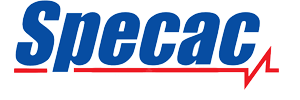Specac's Golden Gate ATR Accessory has the capability to perform non-destructive sample analysis without any sample cross contamination, and there is no need for sample preparation. The results from the Golden Gate ATR Accessory are reproducible. The top plate of the equipment can be changed easily, in order to perform tests under extremely cold or hot conditions, with super critical fluids or in other extreme testing environments. It also has searchable spectral libraries.
The Specac Golden Gate ATR accessory is offered with various sampling options for advanced ATR material analysis, including reaction cell, ambient temperature (standard), cooled, heated, or super critical fluids. How forensic scientists can use the Golden Gate for Fourier Transform Infrared (FT-IR) spectroscopy analysis of drugs, both legal and otherwise, is illustrated in this article.
Easy Sample Preparation
Frequently, the testing of tablets and powders requires the user to grind the sample with potassium bromide (KBr) and then press them into a pellet for IR transmission testing. With the Specac Golden Gate ATR accessory, the time used to make KBr pellets is saved.
A powder or solid sample can be placed onto the diamond ATR crystal and clamped into place, using a manually operated sapphire clamping anvil. It is possible to remove and clean the clamp, so the accessory can be maintained well. Utilizing this process, the quality of the spectra is guaranteed.
The original sample can later be recovered for presentation as evidence, or for subsequent analysis. The relative peak intensity of the absorption bands tends to be different from those of pellet samples, because of the internal reflection mechanism of an ATR accessory. The sample spectra can be searched against a digital database of ATR spectra, to provide a positive identification.
An Example
Next the spectrum was collected for some caffeine and illegal drugs. The Golden Gate ATR was fitted with ZnSe lenses, with a single-reflection diamond ATR element. KR-5 lenses are also available to extend the spectral range. Once a background spectrum is collected, the next step is to co-add and average the FT-IR spectra of 36 scans at 4 cm-1 resolution, in order to get the sample spectra with a single-beam background.
The total sampling time, including background collection and sample clean-up, was about 2-5 minutes per sample. Methamphetamine HCl, amphetamine HCl, cocaine HCl, caffeine, and crack cocaine were all analyzed.
The Results
The spectral data for cocaine HCl and caffeine are illustrated in the following images. The cocaine HCl reading given below is the comparison between a Golden Gate ATR reading and a transmission reading of a KBr pellet of cocaine HCl.

The Golden Gain ATR’s spectral data of caffeine is illustrated below:


This information has been sourced, reviewed and adapted from materials provided by Specac.
For more information on this source, please visit Specac.